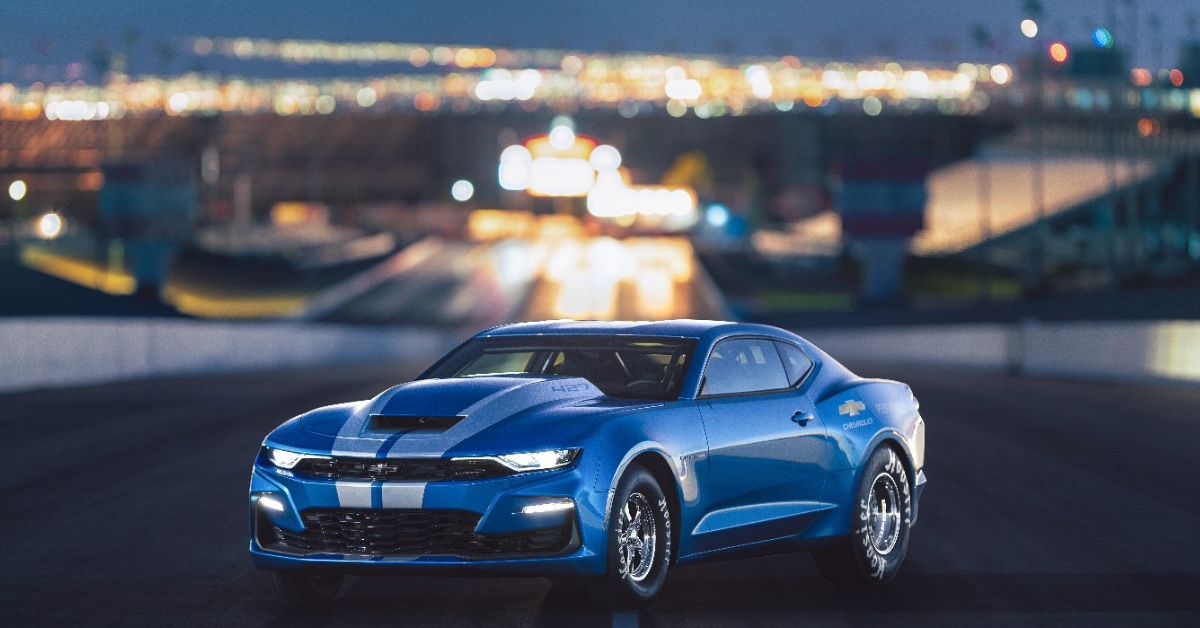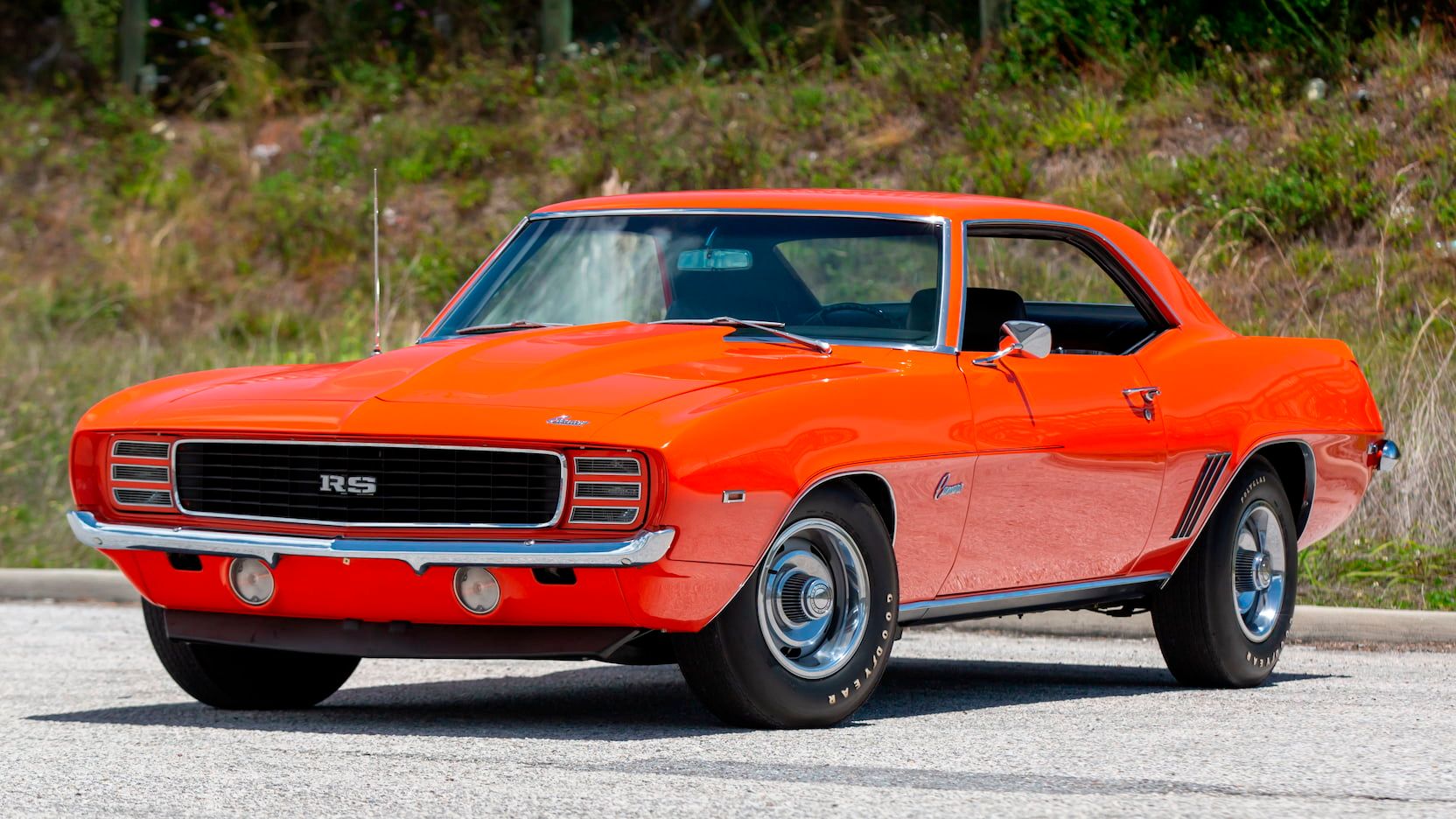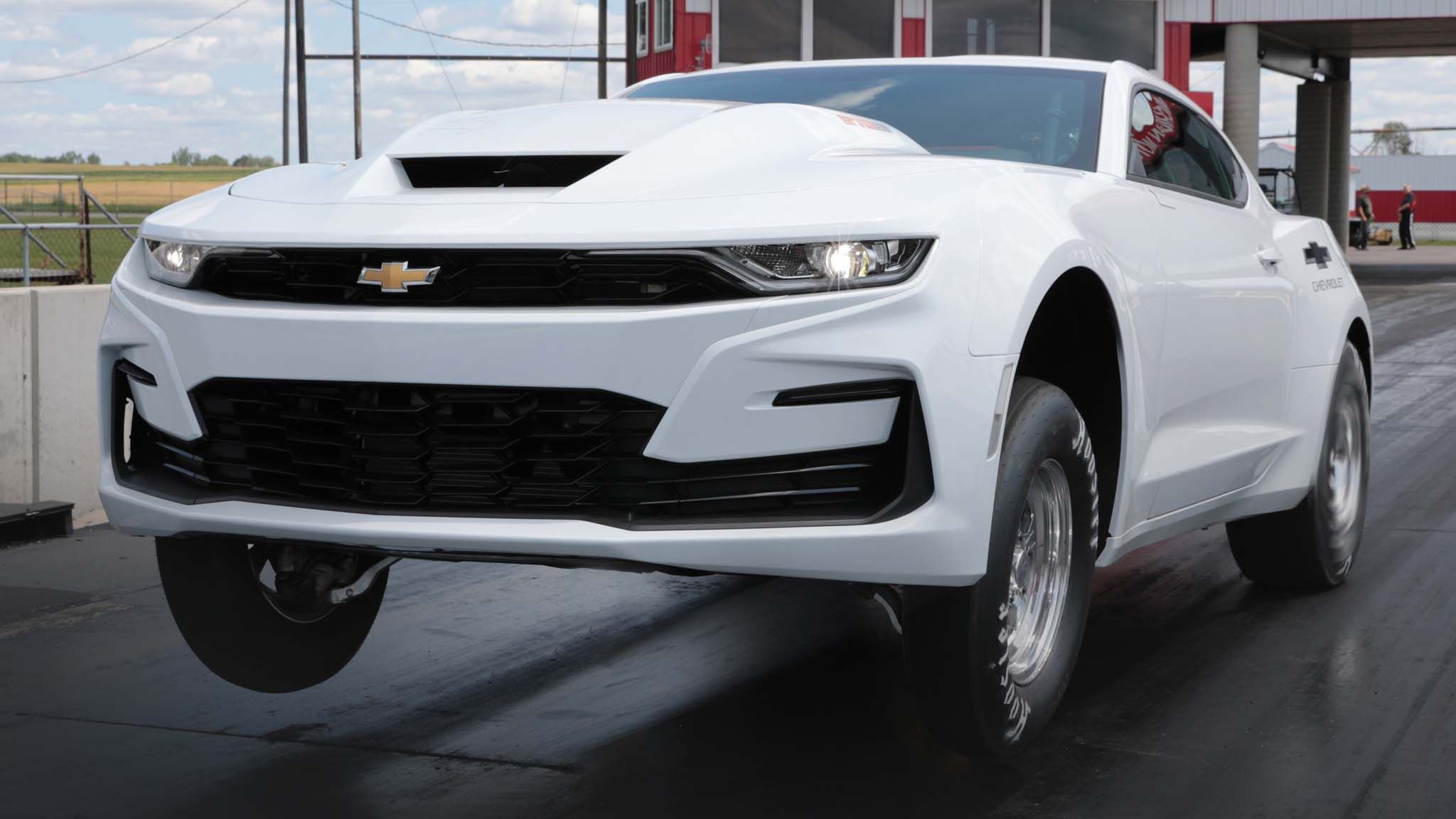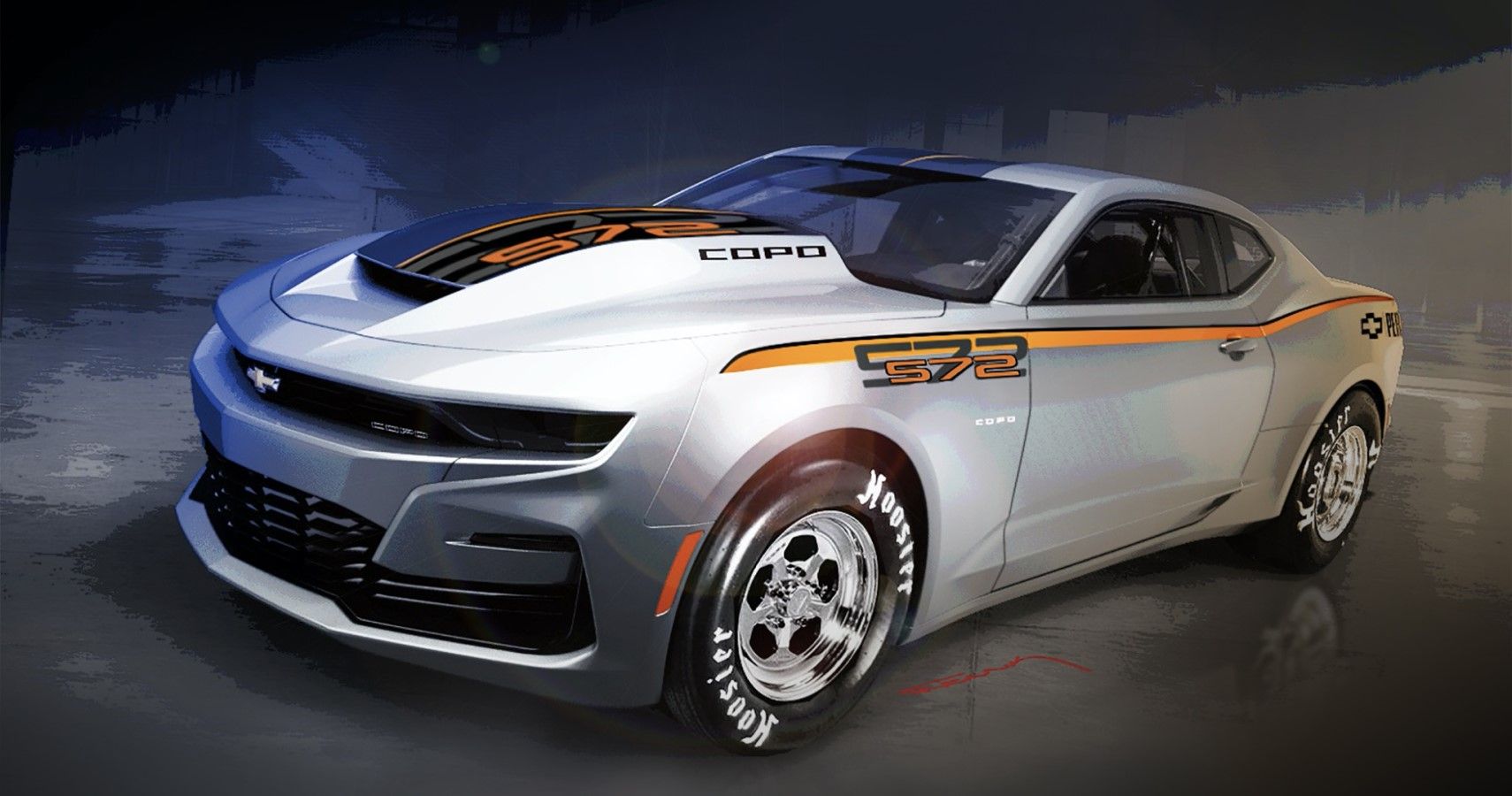Chevrolet seems like it's all about the glory days. The COPO Camaro was a drag-race special that was born to workaround GM's restrictions of the time that prevented the brand's engines from exceeding 6.5-liters in capacity. The result was the 1969 Chevrolet ZL-1 COPO Camaro with a 7-liter V8 and a shattering-for-1969 425 horsepower. Only 69 were made.
The feat was repeated with the modern Chevrolet COPO Camaro from 2012-2015, in the original's limited numbers of 69 each, all designed to meet NHRA racing specifications making it non-street legal unlike the original.
For 2022, Chevrolet brings the COPO Camaro back. But this time, it's not packing 7-liters of American V8. It's got a 572 cubic inch, or 9.4-liter monster of a V8 motor with forged internals, making it the largest car engine that GM makes, and indeed America's largest V8. Just don't ask how much power it makes. Because that number isn't as awe-inducing as its capacity, though as you'll see that doesn't matter as much as the results it'll get.
Updated November 2022: We've updated this article with the latest details and specifications of the 2022 Chevrolet COPO Camaro with the monster 9.4-liter V8, among the other engines available.
Historical Heritage Of The COPO Camaro
Before we discuss the ins and outs of the newest COPO Camaro it is vital to look back to the infamous ’69 COPO Camaro to truly understand the significance of the COPO label.
The COPO label actually means Central Office Production Order, which was a mail-order system through which Chevrolet branches could order custom GM vehicles to suit the taste and styles of their customers. This all became famous through a performance-passionate Chevy employee, Fred Gibb, who ordered a 1969 Chevrolet Camaro with the infamous, and truly gigantic, 427 cubic-inch V8, developed for the Can-Am Racing.
This 7.0-Liter V8 was humbly rated at 435 HP, but it was reported to be capable of over 500 HP. Furthermore, the engine itself was built in a “surgically clean” room, possibly even hermetically sealed, making the construction process truly precise and ahead of its time.
The Nissan team would go on to build their legendary GTR engines in a similar room, only 50 years later. In terms of the Camaro itself, the car was fitted with disc brakes all-around and a GM "Posi" limited-slip differential, allowing the driver to manage all that raw power on the road. Interestingly enough, this two-door, rear-wheel-drive, 500 HP performance beast was road legal, despite its 3.8 second 0-60 MPH time.
To make sense of such figures, consider that a modern Audi R8 V10 or Aston Martin DBS has specs similar to that of this vintage 60s muscle car.
2022 COPO Camaro Is Down Rated For Power?
Moving forward to the newest big-block V8 in the Chevy lineup, the information that we have makes it insanely impressive in some ways, and not so much in others.
Firstly, with a 9.4-liter displacement, this is the biggest and baddest big-block V8 to be ever manufactured in America. More specifically, the cast-iron block features aluminum heads, forged steel crankshaft and connecting rods, and aluminum pistons making it capable of handling insane power.
The NHRA rates it at just 436 HP, making it the weakest of the three engine options for the 2022 COPO Camaro, and just barely over what a 69 COPO Camaro put out with a smaller engine. While it sounds quite disappointing, to say the least, it is possible that the NHRA is being conservative in its ratings and that the true figures are significantly higher. Estimates say that the factory 9.4-Liter big-block COPO Camaro will run 8-second quarter miles, which is not outrageous considering earlier COPO Camaros have been recorded running 8’s in factory form.
However, it is important to note that the torque figures will be pretty astronomical due to the large working volume, which in turn will provide an extraordinary launch. Furthermore, Chevrolet also sells other 572 cubic inch crate engines with HP figures ranging from just over 600 to nearly 700, meaning that there is still room for tuners to maximize the power potential of this beast of an engine.
The other two engine options for the COPO Camaro are a supercharged 5.7-Liter small-block V8 and a naturally aspirated 6.8-Liter small-block V8 which produce 580 HP and 470 HP respectively. Regardless of the engine choice, the only transmission choice available is an ATI TH400 3-speed automatic.
Housing For This Huge Engine
Chevrolet has resurrected the infamous COPO Camaro name to create a modern performance monster that honors the American muscle car heritage of the ‘60s, all the while utilizing modern technology to maximize performance. These modern COPO Camaros are not road legal, unfortunate but not surprising, but come ready built for the drag strip.
Hosting features like wheelie bars, Hoosier drag racing tires, and carbon fiber hood as well as a variety of additional features like trunk-mounted weights and parachutes, these cars were purpose-built for drag racing and can be raced in the NHRA Stock and Super Stock categories.
In terms of purchasing one of these monsters, thankfully Chevrolet has not placed limits on the numbers produced, like with previous iterations. Prices for the three engine configurations will be $105,500 for the 9.4-Liter V8, $117,500 for the naturally aspirated 6.8-Liter V8, and $130,000 for the supercharged 5.7-Liter V8.
There will be a variety of additional options for performance and customizability, so prices are bound to be even higher depending on the needs of the driver.
The 9.4-Liter "Bad" Block Is Illegal For Street Use
Well, it shouldn't come as a surprise. This behemoth of an engine in the COPO Camaro doesn't have a VIN number. Because of this, it can't be registered or insured for street use. But with Chevrolet's eCOPO Concept showing what electric drag cars could look like, maybe there's hope yet for a street-legal, eight-second car.
Source: Chevrolet




